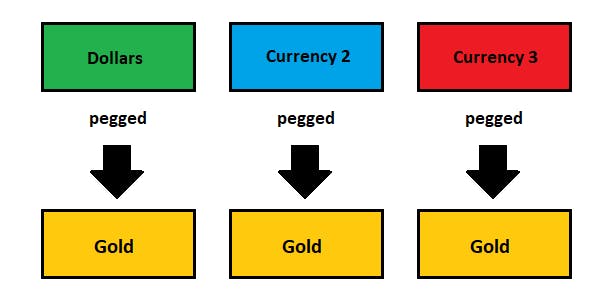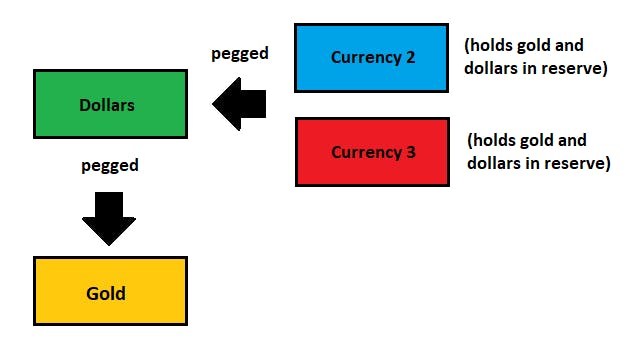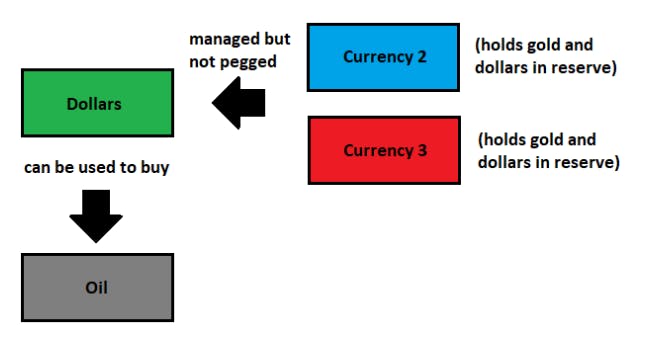Intro
During the early days, A king can collect 1,000 gold coins in taxes, melt them down and make new coins that are each 90% gold (with the other 10% made from some cheap filler metal), and spend 1,111 gold coins back into the economy with the same amount of gold. They do look pretty similar to most people, but some discerning people will notice. Years later, if that’s not enough, he could re-melt them and make them 80% gold, and spend 1,250 of them on the economy…
At first, these slightly-debased coins would be treated as how they were before, but as the coins are increasingly debased, it would become obvious. People’s savings would decline in value, as they found over time that their stash of gold and silver was only fractional gold and silver. Foreign merchants in particular would be quick to demand more of these debased gold coins in exchange for their goods and services.
Gold-backed paper currencies and fiat currencies are the modern versions of that, so the debasement can happen much faster.
The birth of "Fiat Currency"
At first, fiat currencies were created temporarily, in times of war. After the shift from commodity money to gold-backed paper, the gold-backing would be briefly suspended as an emergency action for a number of years, and then re-instated (usually with a significant devaluation, to a lower amount of gold per unit of currency, since a lot of currency was issued during the emergency period).
This is a faster and more efficient way to devalue a currency than to actually debase the metal. The government doesn’t have to collect everyone’s coins and re-melt them. Instead, everybody is holding paper money that they trust to be redeemable for a certain amount of gold, and the government can break that trust, suspend that redeemability, print a ton of paper money, and then re-peg that paper money such that each unit of paper currency is redeemable for a much smaller amount of gold before people realize what is happening to their savings.
That method instantly debases peoples’ money while they continue to hold it, and can be done overnight with the stroke of a pen. This allowed governments to fight much larger wars by extracting more savings from their citizens, which led their international opponents to debase their currencies with similar tactics as well if they wanted to win.
The fact that fiat currencies have no cost to produce, is what gave them the biggest incentive of all.
The "Bretton Woods Agreement"
By 1944 towards the end of World War II after most currencies were sharply devalued, the Bretton Woods agreement was reached. Most countries pegged their currency to the dollar, and the United States dollar remained pegged to gold (but only redeemable to large foreign creditors, not American citizens). By extension, a pseudo gold standard was temporarily re-established.
This lasted only 27 years until 1971, when the United States no longer had enough gold to maintain redemption for its dollars, and thus ended the gold standard for itself and most of the world. There were too many dollar claims compared to how much gold the US had.
The Bretton Woods system was poorly constructed from the beginning because domestic and foreign banks could lend dollars into existence without having to maintain a certain amount of gold to back those dollars. The mechanism for dollar creation and gold were completely decoupled from each other, in other words, and so it was inevitable that the number of dollars in existence would quickly outpace how much gold the US Treasury had in its vaults. As the number of dollars multiplied and the amount of available gold did not, any smart foreign creditor would begin redeeming dollars for gold and draining the Treasury’s vaults. The Treasury would be quickly drained of its gold until they either sharply devalued the dollar peg or ended the peg altogether, which they did.
Since that time, over 50 years now, virtually all countries in the world have been on a fiat currency system, which is the first time in history this has happened. However, the US dollar still has a vestige of commodity-backing, which is part of what kept this system together for so long.
In the 1970s, the US made a deal with Saudi Arabia and other OPEC countries to only sell their oil in dollars, regardless of which country was buying. In return, the US would provide military protection and trade deals. And thus the petrodollar system was born. We’ve had to deal with the consequences of this awkward relationship ever since.
The "PetroDollar"
While the dollar was not pegged to any specific price of oil in this system, this petrodollar system made it so that any country in the world that needed to import oil, needed dollars to do so. Thus, universal demand for dollars was established, as long as the US had enough military might and influence in the Middle East to maintain the agreement with the oil-exporting nations.
An international gold standard looks like this, with each major country pegging its own currency to a fixed amount of gold and holding gold in reserve, for which it was redeemable to its citizens and foreign creditors:

The Bretton Woods pseudo-gold standard involved the dollar being backed by gold, but only redeemable to foreign creditors in limited amounts. Foreign currencies pegged themselves to the dollar, and held dollars/Treasuries and gold in reserve:

The petrodollar system made it so that only dollars could buy oil imports around the world, and so countries globally hold a combination of dollars, gold, and other major currencies as reserves, with an emphasis on dollars. If countries want to strengthen their currencies, they can sell some reserves and buy back their own currency. If countries want to weaken their currencies, they can print more of their currency and buy more reserve assets.

Conclusion
This system gives the United States considerable geopolitical influence because it can sanction any country and cut it off from the dollar-based system and after taking off the Dollar from the Gold Standard in 1972-73 the US has the power to print an unlimited supply of "Dollar" as and when needed.
